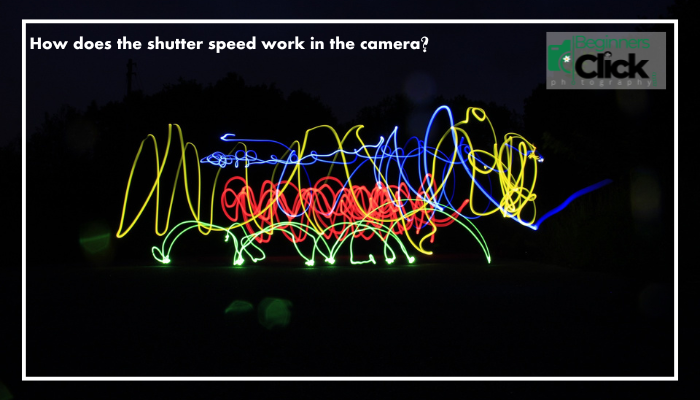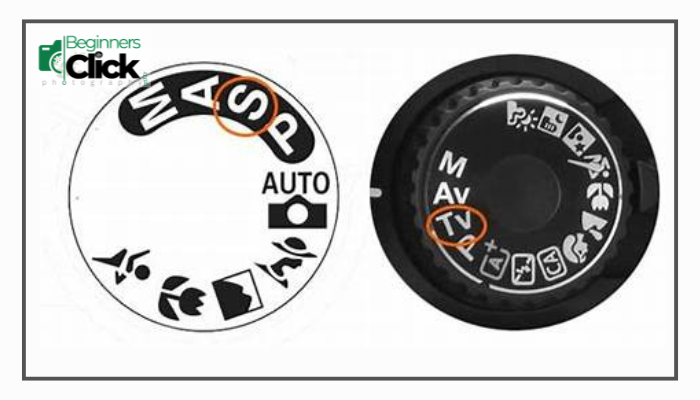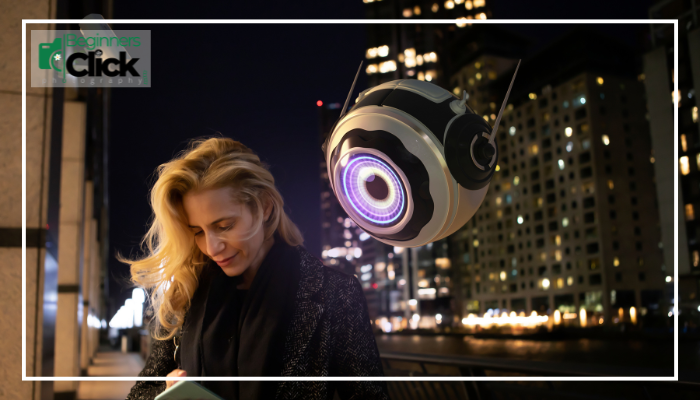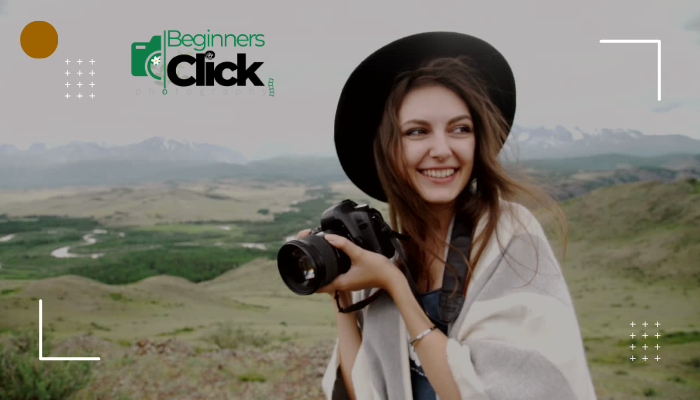Table of Contents
ToggleMastering Shutter Speed in Photography

Have you ever wondered how photographers capture those crisp action shots or those dreamy waterfalls with silky smooth movement?
The secret lies in a fundamental concept called shutter speed. This guide will unveil the mysteries of shutter speed, transforming you from a beginner to a shutter speed master!
As a beginner photographer, the shutter speed function helped me a lot when I started my photography journey. I bought my digital camera, a Canon 60D. It was my first digital camera (DSLR). However, I was a newcomer and did not know how to take photos, so I used the Auto function of the DSLR. One of my favorite photographer friends told me to use priority-based settings at first. Early in my photography journey, I used shutter-speed priority mode.
Now, I am sure that this will help you to become a photographer from beginner to pro. Let’s start. I want to share my experience with you, which will help you the most in becoming a professional photographer.
What is Shutter Speed?
Imagine your camera’s shutter as a curtain. Shutter speed controls how long this curtain stays open, allowing light to hit the sensor and create an image. Faster shutter speeds mean the curtain opens and closes quickly, letting in less light. Conversely, slower shutter speeds keep the curtain open for a longer duration, capturing more light.

How does the shutter speed work in the camera?
Inside your camera, there’s a mechanism called the shutter. It acts like a curtain that stays closed until you take a picture. When you press the shutter button, the curtain opens up for a specific amount of time and then closes again. This time interval is what we call shutter speed.
For better understanding, this portion is written for. I gave a clear understanding of the shutter speed. After this, you can learn more about shutter speed and how it works. Here are some additional points to consider adding to make it even more comprehensive:
- Impact on Brightness: Briefly mention how shutter speed interacts with aperture and ISO to control the overall brightness of an image. You can mention it as part of the exposure triangle.
- Creative Applications: Briefly touch upon how shutter speed can be used creatively to achieve different effects. For example, slow shutter speeds can be used for light trails or silky smooth water, while fast shutter speeds can freeze motion for sports photography.
- Camera Shake: Add a sentence or two about how camera shake can blur photos at slower shutter speeds, and how a tripod can help mitigate this

Here’s a shutter speed counting example with light and darkness which will help you to understand more about shutter speed, incorporating the best aspects of previous explanations and addressing the mentioned issues:
Scenario: Imagine you’re photographing a flowing waterfall on a bright sunny day. You have two shutter speed options:
1/250 sec: This is a relatively fast shutter speed. At 1/250 sec, the shutter stays open for only one two-hundred-and-fiftieth of a second. Think of it like a quick peek.
1/4 sec: This is a slower shutter speed. Here, the shutter stays open for one-fourth of a second, allowing significantly more light to enter the camera sensor compared to 1/250 sec.

Light and Darkness: Better Explanation
- 1/250 sec (Fast Shutter Speed): With such a short exposure time, less light reaches the sensor. This might result in a slightly darker image compared to using a slower shutter speed. However, the advantage is that the fast shutter speed effectively “freezes” the movement of the water droplets, capturing a sharp image of the waterfall.

- 1/4 sec (Slow Shutter Speed): The longer exposure duration allows considerably more light to enter the sensor, potentially creating a brighter image overall. However, since the shutter is open for a longer time, the water movement will be blurred during this period. This can result in a smooth, silky effect on the waterfall, conveying a sense of motion.

Key Points: just remember it, a summary of shutter speed
- Faster shutter speeds (higher numbers in the fraction) allow less light but freeze motion.
- Slower shutter speeds (lower numbers in the fraction) allow more light but blurry motion.
Additional Considerations: it's just for knowledge
Aperture and ISO: Remember that shutter speed is just one part of the exposure triangle. Aperture and ISO also play a role in brightness. You might need to adjust these settings to achieve a balanced exposure, especially with slower shutter speeds in low light.
Camera Shake: Using a tripod is crucial for slow shutter speeds to avoid blurry photos due to camera movement. Before reading the next paragraph, please practice with the above learning. As a result, if you practice more with the above learnings, you can easily understand the next level.
This example combines the clarity of fractions with a real-world scenario to solidify the understanding of shutter speed’s impact on light and image sharpness. It also introduces related concepts like exposure and camera shake for a well-rounded explanation.
Why is Shutter Speed Important in Basic Photography?
Mastering shutter speed is like having a superpower in photography. It unlocks a world of creative possibilities:
Freeze Action: Capture the peak of movement with sharp detail.
Convey Motion: Use slow shutter speeds to blur moving objects, creating a sense of speed or flow.
Control Light: Let in more light for low-light scenes with slower speeds, or maintain a brighter image on sunny days with faster speeds.

By understanding shutter speed, you’ll be well on your way to taking stunning photos that go beyond point-and-shoot simplicity. Get ready to explore the creative potential that shutter speed offers!
Why Shutter Speed is Crucial for Beginners:
Shutter speed is fundamental for beginners because it directly impacts two key aspects of a photograph: sharpness and brightness. Here’s why it’s important:
Sharp Photos: Beginners often struggle with blurry photos. By understanding shutter speed, they can learn to freeze action and capture clear images, especially with moving subjects.
Proper Exposure: Bright or dark photos are another common beginner hurdle. Shutter speed helps control how much light enters the camera, allowing beginners to achieve balanced exposures and avoid underexposed (too dark) or overexposed (too bright) photos.

What is the shutter speed Priority mood?
Shutter priority mode, also known as shutter-speed priority or sometimes labeled as ‘S’ or ‘TV’ on your camera mode dial, is a semi-automatic mode that gives you more control over capturing motion than full auto mode. Here’s how it works:
Focus on the Action:
- In shutter priority mode, you take the reins on shutter speed. You choose the desired speed based on what you want to capture (freeze action, create blur, etc.).
- Once you set the shutter speed, the camera automatically adjusts the aperture to achieve a well-exposed image. This means the camera will widen the aperture (letting in more light) for slower shutter speeds and vice versa.

Benefits of Shutter Priority Mode for Beginners:
Mastering the intricacies of shutter speed is a pivotal step towards becoming a proficient photographer. Among the various modes available, shutter priority mode, denoted as ‘S’ or ‘TV’ on your camera’s dial, stands out as a valuable tool for those starting their photographic journey. This semi-automatic mode empowers beginners to wield control over shutter speed while the camera manages aperture settings, facilitating an immersive learning experience. Let’s delve into why shutter priority mode is indispensable for novices looking to hone their skills and understand the fundamentals of exposure.
- Ideal for Learning: It allows beginners to experiment with different shutter speeds and see how they affect motion blur, making it easier to grasp the concept and its creative potential.
- Focus on the Moment: By setting the shutter speed for the desired action (e.g., a jump shot), beginners can focus on capturing the scene without worrying about aperture settings.
- Understanding Exposure: Observing how the camera adjusts aperture to compensate for shutter speed changes helps beginners gain a deeper understanding of the exposure triangle (shutter speed, aperture, ISO).
Things to Consider with Shutter Priority Mode:
Despite its advantages, mastering shutter priority mode requires an understanding of its limitations. While beginners appreciate the creative freedom it offers in controlling shutter speed, it’s essential to recognize its constraints, particularly regarding aperture control and exposure adjustments. Let’s explore these considerations to fully grasp how to harness the benefits of shutter priority mode effectively.
Limited Aperture Control: While you control shutter speed, the camera determines the aperture, which might not always be your ideal setting for depth of field or background blur.
Light Limitations: If the camera-chosen aperture is too narrow in low light, you might end up with underexposed photos. You might need to adjust ISO or use a flash to compensate.
Overall, shutter priority mode is a fantastic stepping stone for beginners transitioning from full auto to having more creative control over their photos. It allows them to focus on capturing the action or desired motion blur effect while the camera handles the technical aspects of achieving a balanced exposure.
Here's a breakdown of how shutter speed works:
Imagine you’re holding your camera, eager to capture a perfect moment frozen in time. Understanding how shutter speed works is like unlocking a powerful tool that allows you to control the essence of light and movement in your photos. By mastering shutter speed, you’ll gain the ability to freeze a racing athlete mid-stride or create a serene, flowing effect in a waterfall. Let’s delve into how shutter speed interacts with light, motion, and stability to shape the visual story you want to tell through your photography.
Light Capture:
The main job of the shutter is to control how much light reaches the camera’s sensor. Think of the sensor as a light-sensitive canvas. The longer the shutter stays open (slow shutter speed), the more light hits the sensor, creating a brighter image. Conversely, a faster shutter speed allows less light in, resulting in a darker image.
Exposure Triangle:
Shutter speed is one of the three pillars of exposure, along with aperture and ISO. The aperture controls the size of the opening that light travels through the lens, and ISO adjusts the sensor’s sensitivity to light. These three settings work together to determine the final brightness of your photo.
Freezing Motion:
Fast shutter speeds (measured in fractions of a second) are like quick peeks. They let in a burst of light for a very short time, effectively freezing any movement happening in front of the camera. This is ideal for capturing sharp images of athletes in action, wildlife, or even water droplets.
Motion Blur:
Slow shutter speeds (measured in seconds or even minutes) keep the curtain open for a longer duration. This allows more light to enter, which is useful in low-light situations. However, since the shutter is open for a longer time, anything that moves during that period will be blurred in the image. This can be used creatively to depict motion, like silky smooth waterfalls or light trails from moving cars at night.
Camera Shake:
Remember, the shutter speed controls how long the sensor is exposed to light. If the camera shakes even a tiny bit while the shutter is open, that movement will be captured as a blur in the image. This is why using a tripod becomes crucial for slow shutter speeds to ensure sharp photos.
the technical term of shutter speed work in camera
The technical term for how shutter speed works in a camera depends on the specific camera design, but here’s a breakdown of the general principles:
Focal Plane Shutter: Most modern cameras, including DSLRs and mirrorless cameras, use a focal plane shutter. This is a curtain made of two or more leaves located in front of the camera’s image sensor.
First Curtain Movement: When you press the shutter button, the first curtain electronically triggers and rapidly opens across the sensor, allowing light to start hitting the sensor.
Exposure Time: The time between the opening of the first curtain and the closing of the second curtain determines the shutter speed. This is measured in seconds (for slow speeds) or fractions of a second (for faster speeds).

Second Curtain Movement: Once the designated exposure time elapses, the second curtain closes electronically, cutting off light from reaching the sensor. The image is then captured based on the light information collected during the exposure time.
Here's some additional technical jargon you might encounter:
Electronic First Curtain Shutter (EFCS): Some cameras utilize EFCS, where the first curtain movement is electronic instead of physical. This helps minimize camera shake caused by the mechanical movement of the shutter.
Bulb Mode (B): This mode allows the shutter to stay open for as long as the shutter button is held down, enabling extremely long exposures (measured in minutes) for capturing faint starlight or light trails.
Sync Speed: This is the maximum shutter speed at which you can use a flash without getting a dark band at the bottom of the image. It’s caused by the shutter traveling across the sensor and blocking the flash from illuminating the entire scene.
By understanding these technical aspects, you’ll gain a deeper appreciation for how shutter speed functions within your camera.


F*ckin’ awesome things here. I’m very glad to look your post. Thanks so much and i’m having a look ahead to touch you. Will you kindly drop me a mail?
Thank you so much for your kind words! I’m really glad you enjoyed the post. I’d love to connect—please feel free to reach out through the contact page on my blog, and I’ll get back to you as soon as I can. Looking forward to hearing from you!
A lot of of the things you assert happens to be supprisingly precise and that makes me wonder the reason why I had not looked at this in this light previously. This piece truly did turn the light on for me personally as far as this issue goes. But there is actually one particular position I am not really too comfy with so while I attempt to reconcile that with the main idea of the position, allow me see just what all the rest of your readers have to point out.Nicely done.
Thank you so much for your thoughtful feedback! I’m really glad to hear that the post helped you see the topic in a new light. I truly appreciate your honesty about the point you’re still reflecting on—different perspectives always help enrich the conversation. Feel free to share your thoughts anytime; I’d love to hear more from you!
Thanks a lot for sharing this with all folks you actually recognise what you’re speaking approximately! Bookmarked. Kindly additionally talk over with my site =). We will have a link change contract among us!
Thank you for your kind words and for bookmarking the site! I appreciate your interest. At the moment, I’m not engaging in link exchange programs, but I’m always open to genuine collaborations and sharing knowledge. Best of luck with your own site!
Im not sure the place you’re getting your information, but great topic. I needs to spend a while studying much more or understanding more. Thank you for excellent information I was in search of this info for my mission.
Thank you so much for your kind words! I’m really glad the topic was helpful to you. I always try to research carefully before writing, and your interest truly encourages me to keep improving. Wishing you all the best with your mission — feel free to visit again anytime!
You are my intake, I possess few web logs and often run out from to post .
Thank you so much for your kind words! I’m truly glad to hear that my content inspires you. Running multiple blogs can be challenging, especially when it comes to finding new ideas. If you ever need content inspiration or want to collaborate, feel free to reach out. Keep writing and stay creative!
Thanks for every other informative blog. The place else may just I am getting that kind of info written in such a perfect way? I have a project that I’m simply now working on, and I’ve been at the look out for such info.
Thank you so much for your kind words! I’m really glad you found the blog helpful. 😊
If you let me know more about your project, I’d be happy to guide you to more resources or create specific content that can help you out. Best of luck with your work!
I don’t ordinarily comment but I gotta admit thankyou for the post on this special one : D.
I really appreciate that you took the time to comment, especially since you don’t usually do so. Thank you for your kind words — it truly means a lot! 🙂
Hello. remarkable job. I did not expect this. This is a impressive story. Thanks!
Thank you so much! 😊 I’m really glad you enjoyed the story. Your kind words mean a lot and motivate me to keep sharing more content.
You have brought up a very fantastic points, thankyou for the post.
Thank you so much! I’m really glad you found the points useful. I’ll keep sharing more like this—your support means a lot!